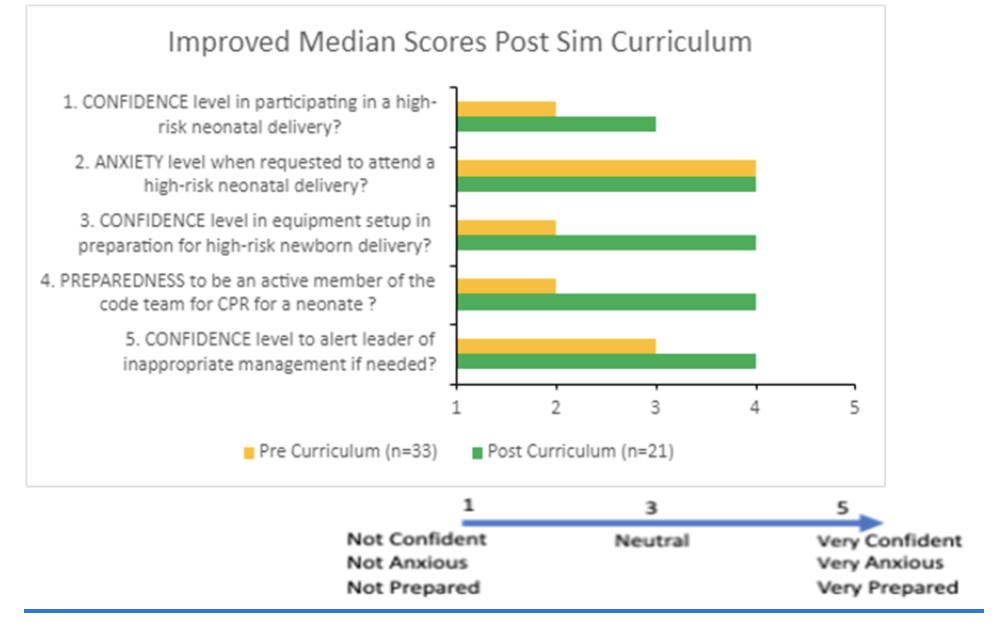Neonatology
Session: Neonatal Quality Improvement 6
92 - Improving Confidence & Preparedness of Pediatric Residents to Participate in Newborn Resuscitation at Deliveries and NICU by Establishing a Biannual Simulation Curriculum in a Level 4 NICU
Monday, May 6, 2024
9:30 AM - 11:30 AM ET
Poster Number: 92
Publication Number: 92.2959
Publication Number: 92.2959

Christina Sebastian, MD (she/her/hers)
Resident Physician PGY 3
Jacobs School of Medicine and Biomedical Sciences at the University at Buffalo
Buffalo, New York, United States
Presenting Author(s)
Background: NICU rotations for Pediatric Residents have decreased over the years, impacting their experience and exposure to high-risk deliveries. This is influenced by NICU census and other learners present such as fellows, medical students, and APPs. While Neonatal Resuscitation Program (NRP) is required every two years, limited exposure to these events can result in forgotten resuscitation skills. SIM training offers an ideal hands-on learning environment for resuscitators to develop and maintain essential skills required in a high acuity NICU.
Objective: Develop & implement a standardized bi-annual high-risk Newborn Resuscitation SIM Curriculum for Pediatric Residents based on NRP guidelines to 1. improve their confidence and preparedness to participate in newborn resuscitation, 2. improve their retention of key elements of NRP based resuscitation steps.
Design/Methods: We created a SMART Aim & Key Driver diagram (Fig. 1) to develop a 2-session SIM curriculum for 6-8 pediatric residents in different training levels (1-3). The session spanned over 5 weeks and followed the 8th edition of NRP guidelines. Session 1 covered initial issue resuscitation steps up to Positive Pressure Ventilation during the fall session, while Session 2 focused on advanced resuscitation skills including intubation, CPR, and epinephrine administration. Yearly pre and post surveys assessed residents’ confidence and preparedness in newborn resuscitation, and post-session surveys were given a week later to gauge effectiveness and retention of key points.
Results: The response rate for the yearly pre-survey was 76%, while the post survey was 48%. The improvement in confidence, preparedness for equipment set up, participation in high-risk delivery & newborn resuscitation was statistically significant for all questions on the Mann –Whitney Test (Fig 2). Even though the median stayed 4 for anxiety levels, overall scores moved from mean of 4.03 to 3.52, indicating lower anxiety while participating in newborn resuscitation. We were able to perform paired analysis on a subset of the group (n=17). It showed statistically significant improvement in Q1,3 &4 (p < 0.05) on the Wilcoxon Signed Ran as well. For pre-post surveys on session 1 & 2 statistically significant improvement was noted on 5 of the questions, as noted in Fig 3.
Conclusion(s): Implementing a standardized neonatal resuscitation SIM curriculum in small group settings biannually for pediatric residents in a level 4 NICU, resulted in improved knowledge & skill retention, and improved confidence and preparedness in participating in high-risk neonatal resuscitation scenarios.

.png)
.png)
